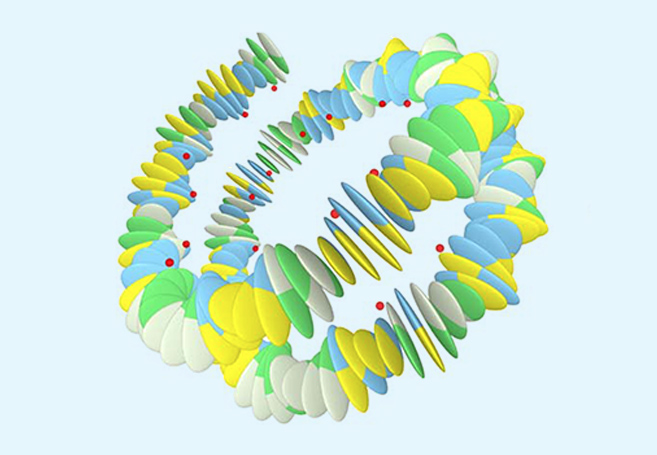Scientists at the Leiden Institute of Physics have confirmed a discovery that will rewrite the books on DNA. Ever since Watson and Crick identified the structure of DNA molecules in 1953, scientists have assumed that the only information contained within each strand is the various combos of G, A, T and C inside the iconic double helix structure. But today’s announcement confirms what scientists have suspected since the 1980s — there is a secret “hidden” code found inside the specific way each DNA molecule is wrapped up and folded.
Each cell in existence contains 4-feet (2m) of DNA. And as Eric Arends of PHYS.org writes: “Each cell contains the exact same letter sequence, and yet every organ behaves differently. How is this possible? … The way in which DNA is folded determines how the letters are read out, and therefore which proteins are actually made. In each organ, only relevant parts of the genetic information are read. The theory suggests that mechanical cues within the DNA structures determine how preferentially DNA folds.”
To learn more about this incredible discovery you can read the full study at PLOS.org. And before you read the technical details of how the team unlocked this mystery, here’s some food for thought from the folks at KQED: “Each human cell has around 6 feet of DNA. Let’s say each human has around 10 trillion cells (this is actually a low ball estimate). This would mean that each person has around 60 trillion feet or around 10 billion miles of DNA inside of them. The Earth is about 93 million miles away from the sun. So your DNA could stretch to the sun and back 61 times. That is one person’s DNA.” For all FEELguide stories related to DNA be sure to visit DNA on FEELguide.
SEE ALSO: Digital DNA: A Mindblowing Conversation About The Future Of Synthetic DNA In The Digital Age
SEE ALSO: Researchers Discover The Powerful Physiological Effects Of Semen On Women’s Bodies, Brains & DNA
SEE ALSO: Scientists Stunned By Meditation’s Ability To Regrow DNA’s Age-Defying Telomeres In Cancer Patients
SEE ALSO: DNA Methylation & The Epigenetic Clock: The Science Of How Heavy Smoking & Drinking Speeds Up Aging
SEE ALSO: The WOW Files: Charlie Rose Talks To Gina Kolata About Astounding “Dark Matter” Making Up 98% Of DNA


